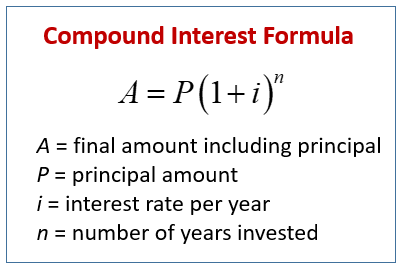Compound Interest
A collection of videos to help GCSE Maths students learn how to calculate compound interest.
The following diagram gives the Compound Interest Rate Formula where the interest is compounded once per year. Scroll down the page for more examples and solutions.

Compound interest
Examples:
- Dan has £6,000 in his bank account. His bank account pays compound interest at a rate of 4% per year. How much will Dan have after 3 years?
- Dan has £5,489.23 in his bank account at 1 Jan 2015. His bank account pays compound interest at a rate of 2.89% per year. How much will Dan have after 3 years?
- Sarah wants to invest £3,000 for 3 years in the same bank. The Big Bank pays 4% for the first year and 1% each year after. The Big Bank pays 5% for the first year and 0.5% each year after. At the end of 3 years, Sarah wants as much money as possible. Which bank should she invest her £3,000 in?
How to work out compound interest?
GCSE Unit 1 Compound and Simple Interest
Try the free Mathway calculator and
problem solver below to practice various math topics. Try the given examples, or type in your own
problem and check your answer with the step-by-step explanations.

We welcome your feedback, comments and questions about this site or page. Please submit your feedback or enquiries via our Feedback page.